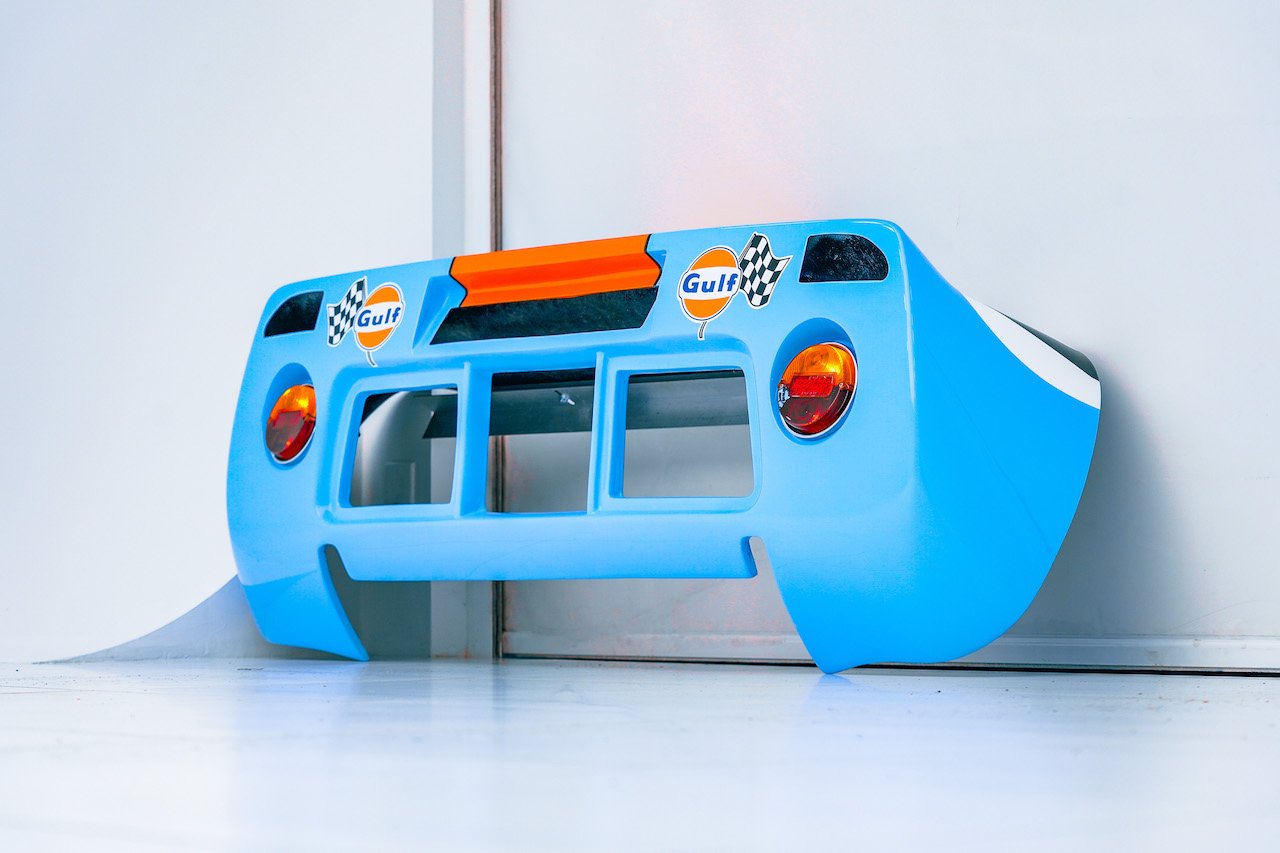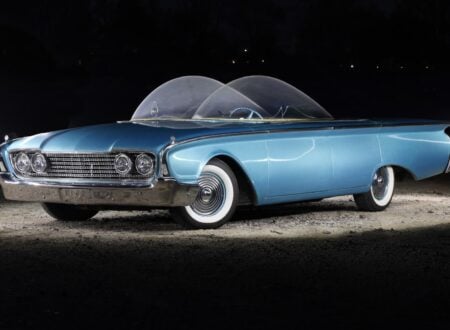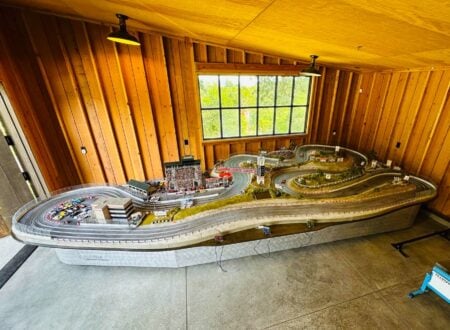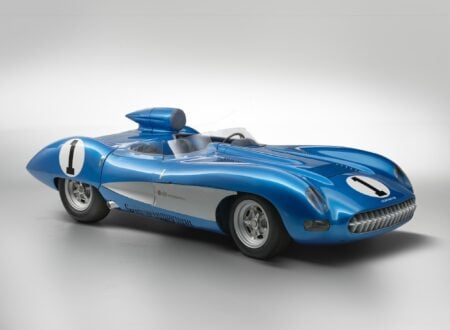This is a 1:1 scale sculpture of the tail of a Ford GT40, it’s said to be one of just two that were moulded from a real car, and interestingly the taillights and blinkers all work.
The Importance Of The GT40
The Ford GT40 was born out of a rivalry between two automotive giants: Ford and Ferrari. In the early 1960s, after a failed attempt by Ford to purchase Ferrari, Henry Ford II decided to beat Ferrari at their own game by besting them on the race track, specifically at the prestigious 24 Hours of Le Mans.


The development of the GT40 was initiated in England when Ford partnered with Lola Cars. Using Lola’s existing mid-engined Lola Mk6 GT chassis as a starting point, the project, led by Roy Lunn, aimed to create a race car that could outperform the dominant Ferraris. The “GT” in its name stood for Grand Touring, and “40” referred to the car’s overall height in inches.
Making its racing debut in 1964, the GT40 faced initial challenges, struggling with reliability issues and failing to finish Le Mans that year. However, Ford, determined to succeed, recruited Carroll Shelby, an accomplished race car driver, engineer, and former Le Mans winner. Under Shelby’s guidance, the GT40 was revamped, leading to the creation of the MK II version.
By 1966, the GT40’s performance had significantly improved. That year, Ford achieved its much-desired victory at Le Mans, with the GT40 claiming the first, second, and third positions, marking the beginning of its dominance in endurance racing. The GT40’s success continued, winning Le Mans every year from 1966 to 1969.
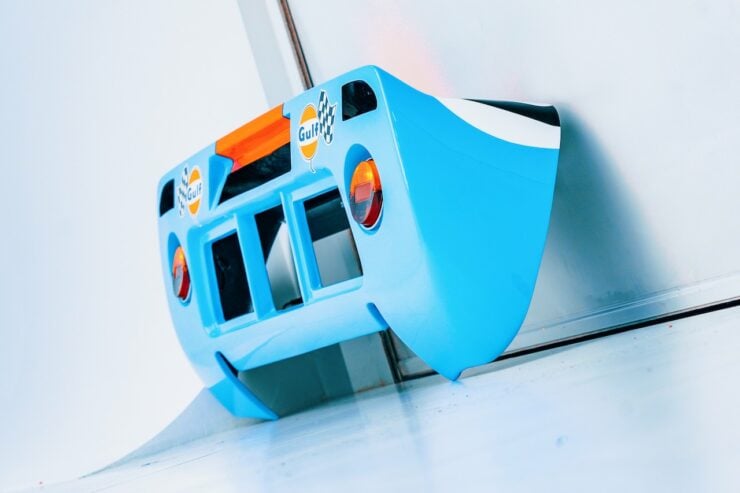

Following its fourth consecutive win in 1969, the GT40’s reign at Le Mans came to an end as changes in regulations and the evolution of racing technology rendered the car less competitive against newer challengers. The Ford GT40 left an indelible mark on the world of motorsport, transforming Ford’s image on the global stage and cementing its legacy as one of the most successful sports racing cars of its time.
The Ford GT40 Wall Art Shown Here
This 1:1 sculpture is made from fiberglass, it’s finished in the classic Gulf racing colors of blue and orange, and it features period correct Gulf decals on the rear.
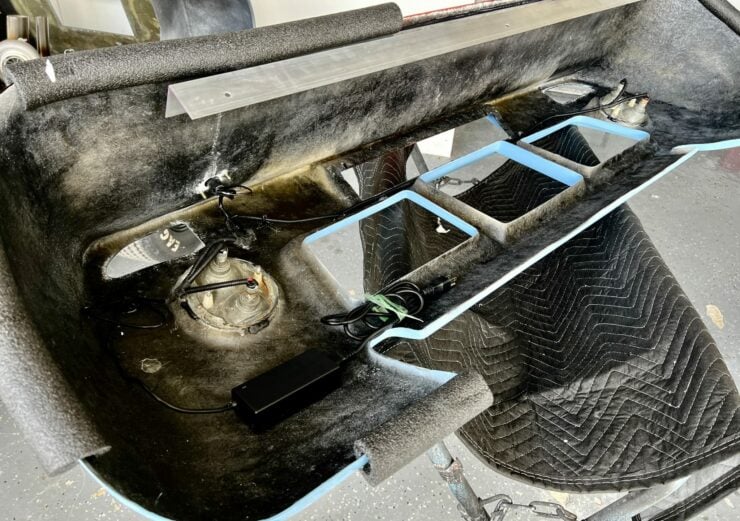

As mentioned further up, it has functional taillights with integrated turn signals and it runs off of a standard 110 volt North American wall outlet. Buyers in other regions will need to look into a converter before plugging it in.
It’s now being sold out of Boca Raton, Florida on Bring a Trailer and it comes with an adjustable aluminum bracket for wall mounting. If you’d like to read more about it or place a bid you can visit the listing here.
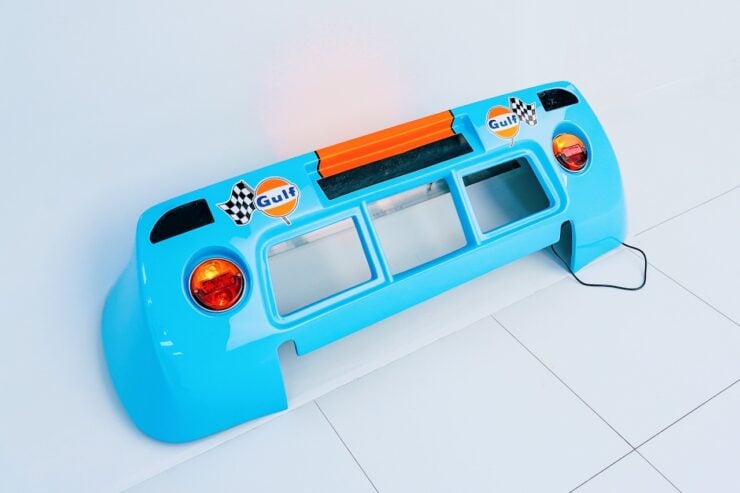
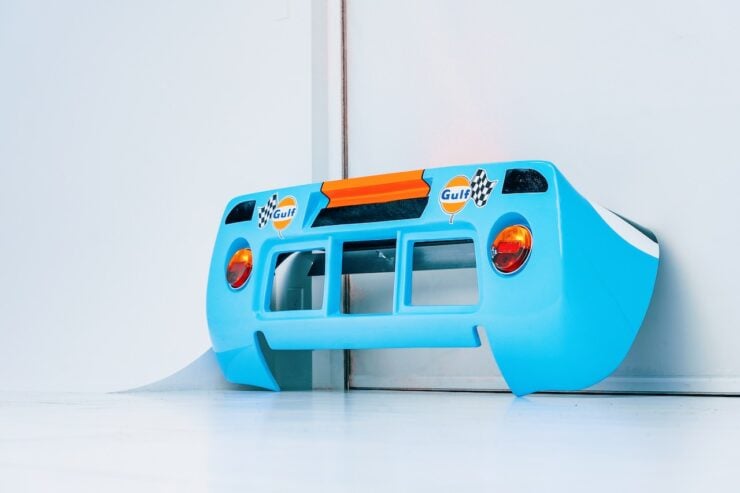
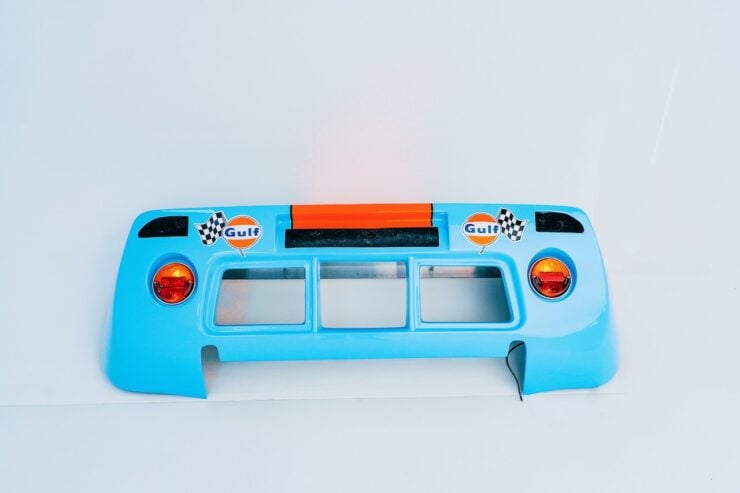
Images courtesy of Bring a Trailer

